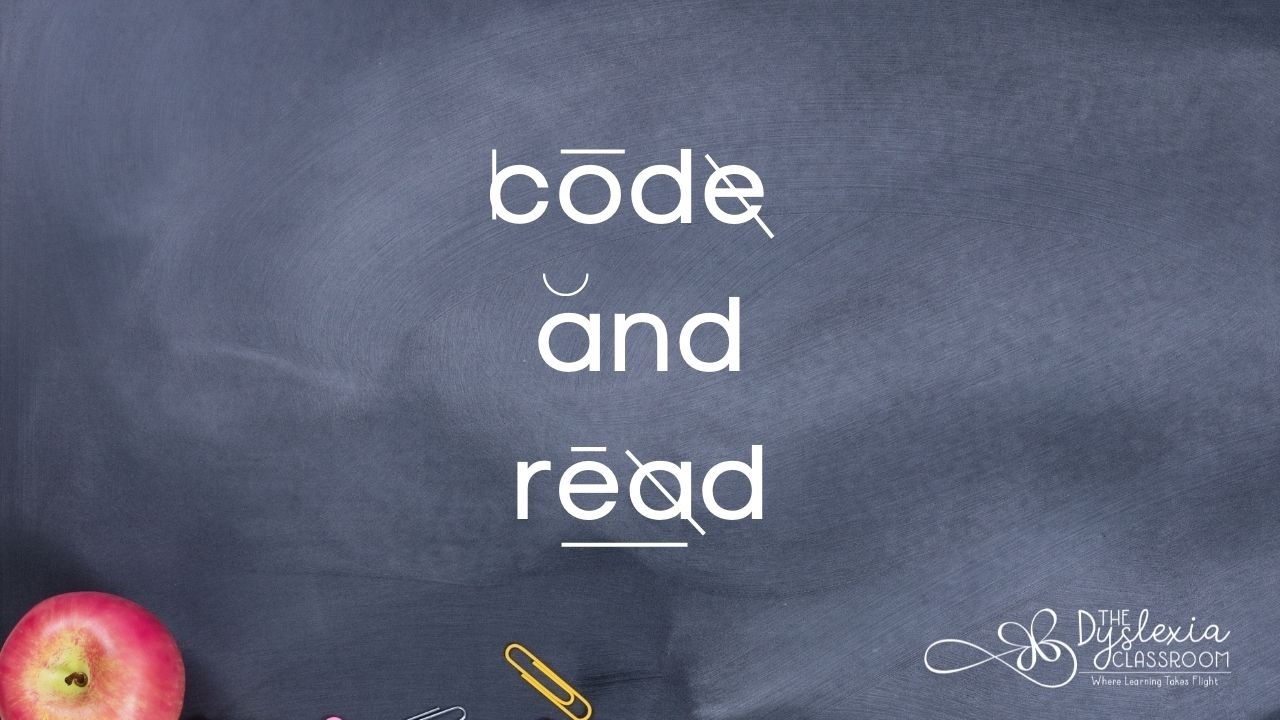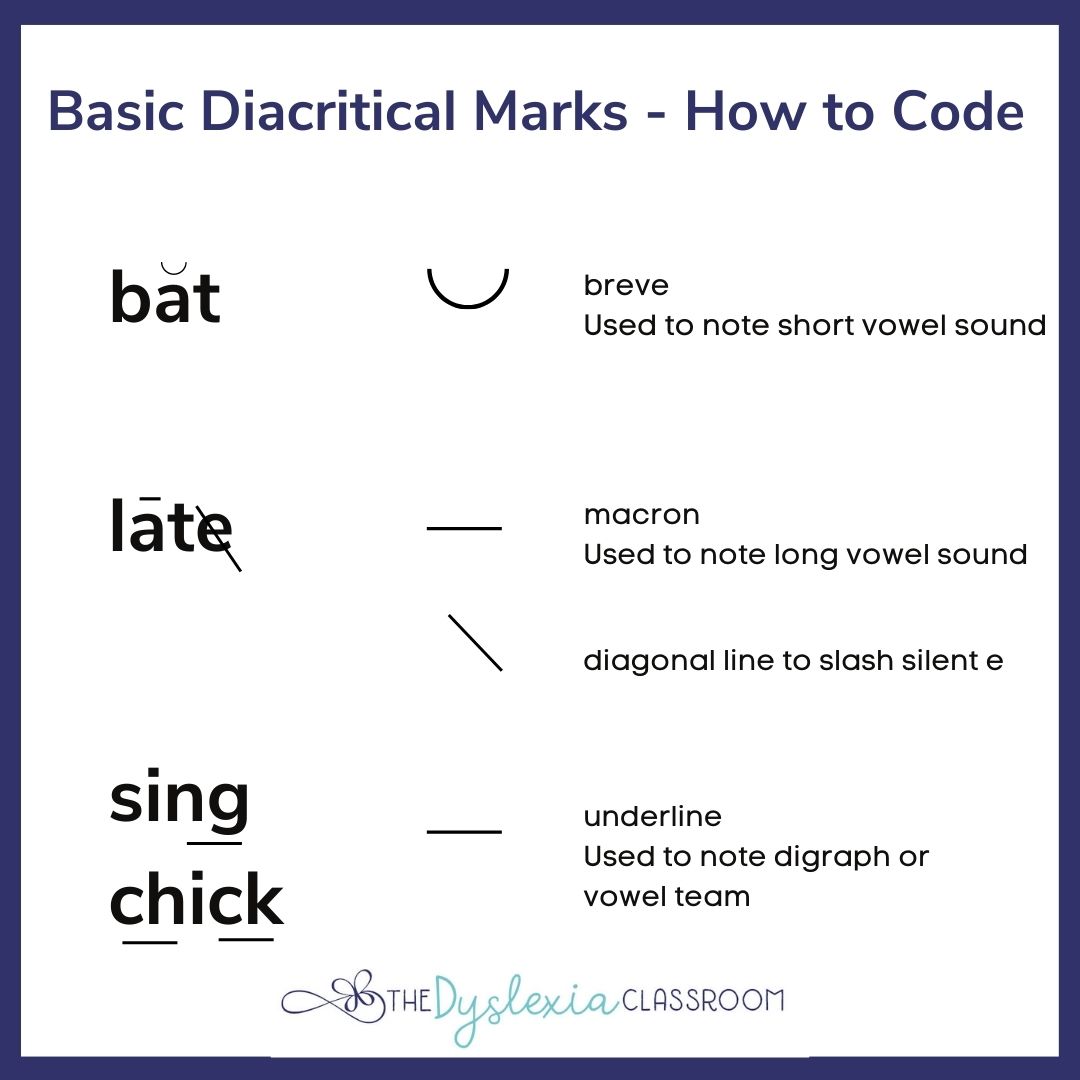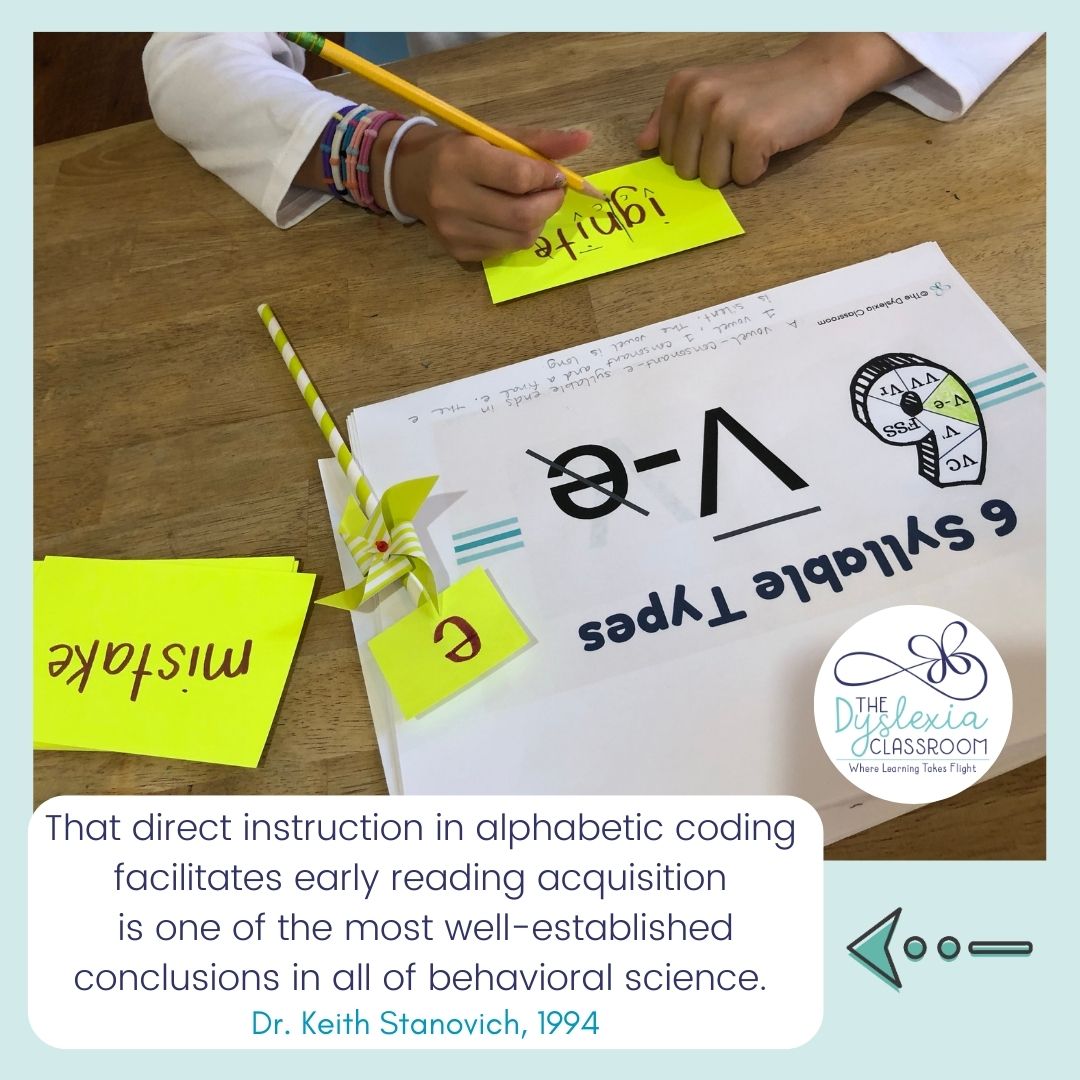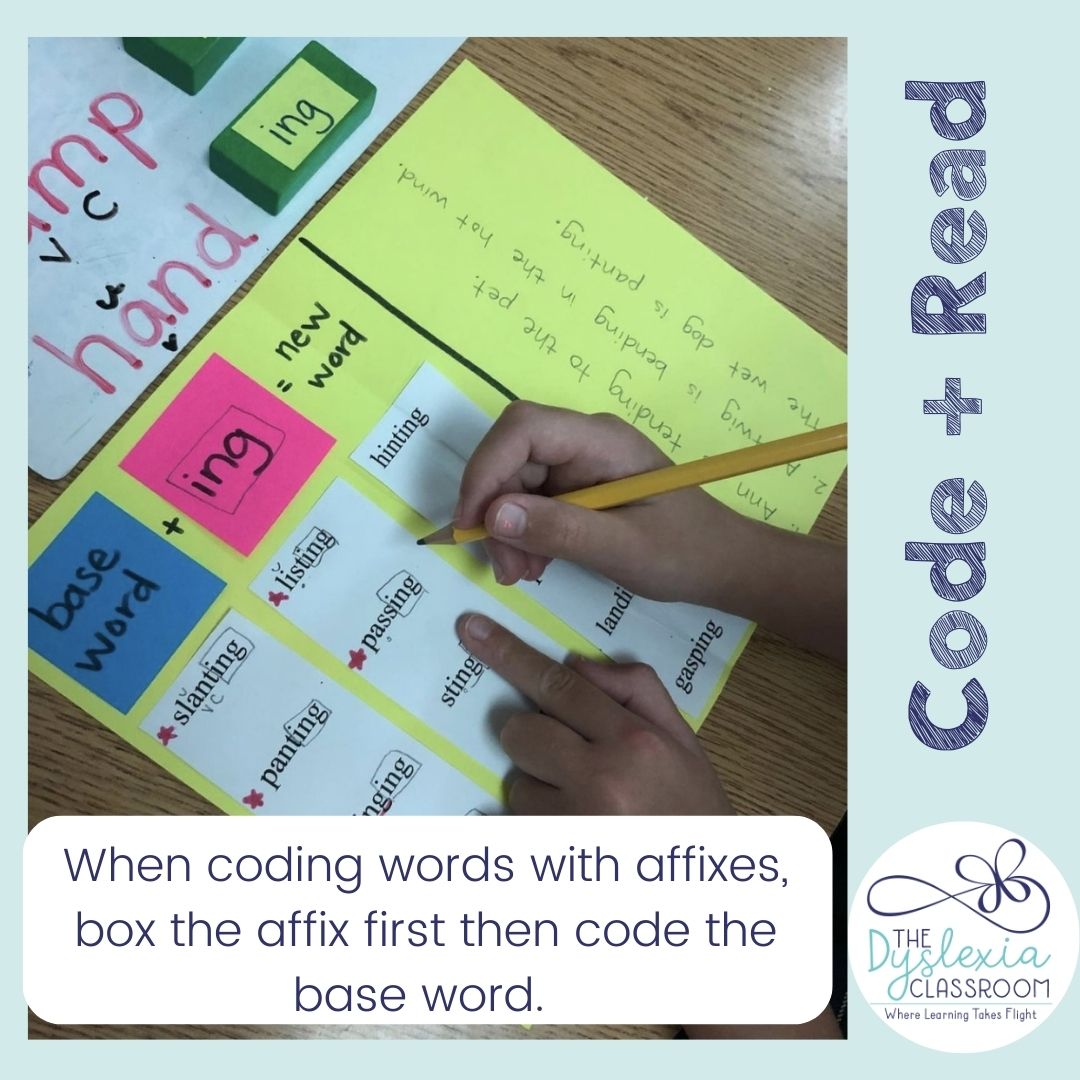Code and Read - How using diacritical marks aids students with dyslexia

At a recent training, one of the participants asked me about our students using coding (the diacritical marks used when analyzing words) and was unsure of the benefits. I love that she asked me this because it is also something many parents may find unfamiliar.
Coding words allow students who are learning to read, who have dyslexia, or who may struggle to have a clear strategy for decoding unknown words. The use of set markings is a scaffold within our instruction that helps students focus on key components of a word. Coding removes the guessing of words because students have an explicit and systematic approach to accessing unknown words. Coding is taught systematically and explicitly through multi-sensory learning within a structured literacy approach.
The goal of coding is to gain reading with accuracy. Accuracy is the ability to decode single words correctly with freedom from mistakes or errors. This scaffold supports students as they learn and practice a new skill - primarily the decoding of words and word reading.
Basic Diacritical Markings for Coding Words
When we note the sounds within words, especially the vowel sounds, it is helpful to note some basic diacritical marks. There are more advanced codings, but these three will get you started and bring awareness to the pronunciation of phonemes within words.

The first marking is the breve. It can be pronounced either breve or breve - both are acceptable - so determine what is used in your dialect or region and remain consistent. The breve is used to note the short vowel sound.
The second marking is the macron. This line above the vowel sound notes the long vowel sound. When coding the vowel-consonant-e pattern within words, you can use a diagonal line to slash out the silent e.

Underlining digraphs, trigraphs, and vowel teams is a good scaffold for students as well. This will help them see that these letters are grouped. (A digraph is two letters that represent one sound. For example, ck, th, ng, and ch. A trigraph is three letters that represent one sound. For instance, tch and dge. Vowel teams are those groupings that represent one vowel sound, such as digraph ee as /e/ and digraph ai as /a/, as well as diphthongs, which represent a gliding of vowel sounds such as diphthong oi and oy as /oi/.)
Coding with Affixes (Prefixes + Suffixes)
Here a young reader is working with base words and suffix -ing. Before the concept of coding, a child may sound out every single letter individually; however, coding a word teaches a student to analyze an unknown word. By identifying and boxing the suffix -ing, the student can then work on analyzing the base word and then read the entire word. As students become more proficient, the coding is gradually released, but the wonderful thing is that it is always a strategy tool that they can use when needed.

Coding with Final Stable Syllables
Helping students transfer their knowledge of syllable types assists with coding and reading words. One syllable type is Consonant-le, sometimes called Final Stable Syllables. Regardless of what term you use, there are some key points to this syllable type. It is:
- final in location.
- stable in spelling.
- stable in sound production.
Working on Consonant-le syllables with my first graders helps them with quicker decoding. They bracket off the Consonant-le syllable and then code the remainder of the word.

Some examples of final stable syllables (consonant-le syllable) are:
- ple as in purple,
- ble as bubble and table,
- tle as in bottle, fle as in ruffle,
- cle as in popsicle,
- kle as in ankle.
My students love it when we get to this because they can read larger words and feel so proud!
Gradual Release of Support
Coding is a scaffold that provides students with tools to decode words accurately. When I work with teachers, they often ask about coding or markings and worry about a student's dependency on this skill. As we move through our sequence of lessons, students will release their dependence on coding, but it will always remain a skill in their "reading toolbox" that they can use when needed.
It's fantastic to see my students gain confidence as they learn about the structure of our language and apply the skills that help them unlock the reading code.
Do you have your student's code words?

This information is the intellectual property of @2016 The Dyslexia Classroom. Do not use or repurpose without expressed permission from The Dyslexia Classroom. Please give The Dyslexia Classroom an attribution if you use, reference, or quote/paraphrase copyrighted materials. This includes but is not limited to blogs, social media, and resources.



